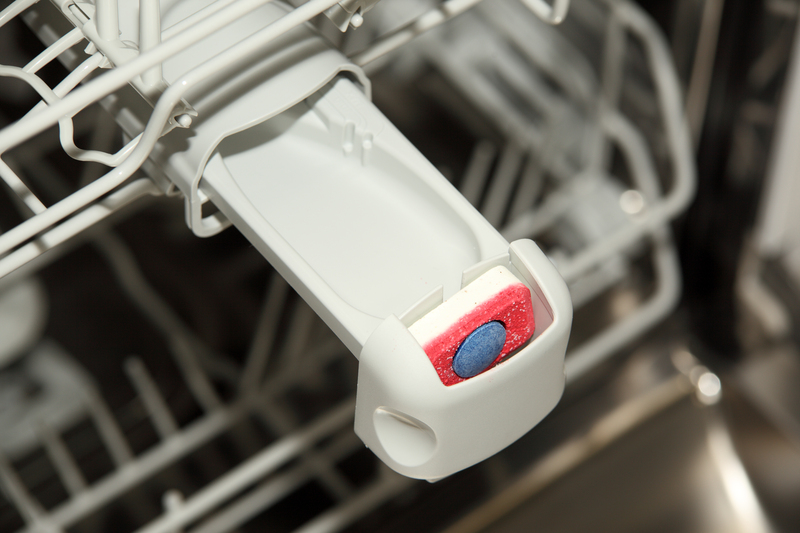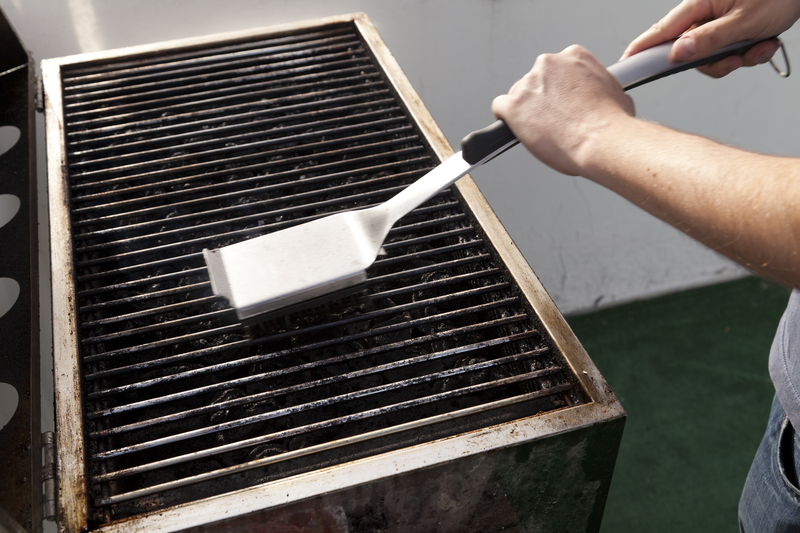Organize a Small Wardrobe with Efficiency in Mind
Posted on 16/06/2025
How to Organize a Small Wardrobe with Efficiency in Mind
Living with limited closet space can be a daunting challenge, but it's far from impossible. An efficient small wardrobe organization strategy allows you to maximize every precious square inch, ensuring all your clothes and accessories are easy to find, access, and maintain. Whether you're living in a compact city apartment, sharing a dorm room, or simply streamlining your closet, our guide offers a comprehensive approach to organizing a small wardrobe for efficiency. Read on to discover practical tips, creative solutions, and expert advice to transform your space into an organized haven.
Why Efficient Wardrobe Organization Matters
Efficient wardrobe management goes beyond just neatness; it can save you time, energy, and even money. With everything in order, you'll start each day with less stress and more confidence, knowing exactly where to find your favorite pieces. Furthermore, efficient use of space often preserves your clothes, keeping them in better condition for longer.
- Less clutter, less stress: An organized closet makes getting dressed easier and more enjoyable.
- Maximized storage: You make use of every corner, shelf, and hanger.
- Reduced spending: Knowing what you already own prevents unnecessary purchases.
- Improved maintenance: Proper storage prevents wrinkles, damage, and loss of items.

Step 1: Declutter and Assess Your Wardrobe
Start with a Wardrobe Audit
Efficient small wardrobe organization starts with decluttering. Go through every single item in your closet, including clothing, shoes, and accessories. Take everything out and lay it on your bed or a clear surface.
- Keep: Items you wear regularly and love.
- Donate or Sell: Clothes that no longer fit, are out of style, or haven't been worn in over a year.
- Repair or Repurpose: Pieces with sentimental value or minor damage.
- Seasonal Storage: Move out-of-season clothes to a separate area to free up everyday closet space.
Pro Tip: Be ruthless. Every piece must justify its space in your mini-closet!
Step 2: Plan Your Small Wardrobe Layout
Analyze Your Storage Options
Take a close look at your closet space. Measure it, including the height, width, and depth. Identify areas that usually go unused, such as the back of the door, floor, or wall space.
- Shelves: For stacking clothes, bins, or shoes.
- Hanging rods: Crucial for maximizing vertical space.
- Baskets and bins: Ideal for accessories, undergarments, or seasonal items.
- Hooks: Perfect for hats, belts, bags, and jewelry.
- Drawers: For folded clothes and smaller pieces.
- Under-bed storage: Store shoes or off-season clothes in bins beneath your bed.
Step 3: Invest in Space-Saving Wardrobe Organizers
With a small closet, every inch truly counts. Consider purchasing purpose-built space-saving wardrobe organizers. Choose products that fit your budget and style, but always prioritize function.
- Thin velvet hangers save space and prevent clothes from slipping.
- Double-hanging rods instantly double your hanging space, especially for shorter items like shirts and pants.
- Cascade hooks or multi-tiered hangers let you hang multiple items vertically.
- Stackable boxes and bins on shelves keep smaller items arranged and accessible.
- Shoe racks that fit on the floor, behind the door, or under the bed.
- Drawer dividers and organizers to separate socks, underwear, and accessories.
Tip: Always measure your wardrobe before buying organizers to ensure a perfect fit.
Step 4: Master the Art of Folding and Hanging
Which Items to Hang vs. Fold
Not every item needs to be hung, and proper folding can save a surprising amount of space. Here's a quick guide:
- Hang: Dresses, blouses, suits, jackets, trousers, shirts that wrinkle easily.
- Fold: T-shirts, jeans, sweaters, pajamas, activewear.
Adopting efficient folding methods such as the KonMari method (vertical folding) enables you to see all your items at a glance and makes any drawer more efficient. Rolling clothes is another effective way to minimize bulk and maximize small wardrobe space.
Step 5: Use Vertical Space Wisely
Maximizing vertical space in a small wardrobe is one of the cleverest ways to add storage capacity. Don't just use the horizontal rod--think top-to-bottom!
- High shelves: Store less-used items or seasonal clothes in labeled bins on the top shelf.
- Lower space: Install a shoe rack or baskets beneath your hanging clothes.
- Back-of-door organizers: Suitable for shoes, bags, and accessories.
- Hook racks: Attach to the inner wall or closet door to hang hats, bags, or scarves.
Step 6: Organize by Category and Color
Creating an Efficient Daily Routine
An efficient small wardrobe isn't just tidy--it's logical. Group your clothes by category: all shirts, pants, dresses, etc., together. Take it a step further by arranging each group by color--this visually streamlines your closet and makes finding what you want nearly effortless.
Pro Tip: Arrange by frequency of use. Keep everyday clothing at eye-level and lesser-worn, special-occasion items higher or lower.
Step 7: Use Labeling and Clear Storage
Labels help keep an organized wardrobe system sustainable. Use sticky tags, chalk labels, or printed stickers on bins and baskets so items are always returned to their designated spot. Clear containers also help you see contents at a glance, minimizing rummaging.
- Label drawer dividers: Socks, tights, bras, etc.
- Use clear shoeboxes: Especially for items stacked high or stored away.
- Transparent shelf bins: Excellent for accessories, hats, and off-season gear.
Step 8: Rotate and Reassess Every Season
Seasonal wardrobe rotation is essential for maintaining efficiency in a small wardrobe. At the beginning of each season, pack away clothes you won't need for a few months, and pull forward season-appropriate items.
- Vacuum storage bags are perfect for compressing bulky winter clothing.
- Store off-season shoes in boxes or under-bed containers.
- Use this opportunity to purge items you didn't wear the previous season.
Step 9: Implement a One-In, One-Out Policy
The one-in, one-out rule is a simple but powerful way to keep a small wardrobe organized long-term. Any time you buy a new item, commit to removing an old one. This maintains balance and prevents overcrowding.
Step 10: Maintain Your Efficient Wardrobe Habitually
Organizing your wardrobe efficiently is not a one-time event, but an ongoing practice. Set aside a few minutes each week to tidy up, return misplaced items, and reassess your needs.
- Do a quick daily refold or re-hang after each day.
- Wipe down shelves and vacuum floors monthly.
- Sort clothing for laundry or donation regularly.
- Revisit your organization system every few months to make adjustments.
Creative Ideas to Further Maximize Small Wardrobe Space
Ingenious Storage Solutions
- Hidden Hooks: Install them on closet walls for bags or jewelry.
- Tiered Hangers: Hang up to five pairs of pants on a single hanger.
- Drawer Underwear Boxes: Section off drawers for delicate items.
- Use Suitcases as Storage: Store out-of-season items in spare suitcases on closet shelves or under your bed.
- Vacuum Bags: Store puffy items, like coats or bedding, in vacuum-sealed bags to compress bulkiness.
Creating a Capsule Wardrobe for the Smallest Closets
If even after maximizing space, your wardrobe still feels overcrowded, consider shifting toward a capsule wardrobe. This minimalist approach involves curating a small number of versatile, high-quality pieces that all work together. It makes outfit planning easier and keeps your closet ultra-efficient.
- Stick to a coherent color palette.
- Prioritize multipurpose items.
- Invest in quality over quantity.

Frequently Asked Questions About Organizing a Small Wardrobe Efficiently
How do I keep my small wardrobe organized long-term?
Consistency is key. Make returning items to their place part of your daily routine. Reassess and adjust your system as your needs shift.
How can I make the most of a tiny closet?
Use vertical space, utilize every inch with bins and slim hangers, add shelves above and below, and don't hesitate to hang items on the back of the door. Flexibility in your storage strategy is crucial.
What should I do if I can't afford fancy organizers?
You don't need expensive products. Repurpose shoeboxes, jars, or old baskets to create DIY storage solutions. The key is functionality and fit rather than cost.
Final Thoughts on Organizing a Small Wardrobe with Efficiency in Mind
Efficient small wardrobe organization is about cleverness, prioritizing your essentials, and maintaining a system that works for you. Remember, less is more--the less clutter, the easier it is to find, coordinate, and care for your wardrobe. Use the tips in this guide to create a compact wardrobe that works for your lifestyle, is pleasing to the eye, and helps make your daily routine a little smoother.
Embrace the challenge--your small closet can be transformed into a showcase of efficiency and style!
```



